I was interviewed for a blog on the teaching resources portal Twinkl. Anyone who know me knows I’m always happy to talk about programming and games. This time I’m wearing both my gamedev hat and my university lecturer hat.
How to kill your friends and alienate people: The Necromancer’s Tale development update
The Necromancer’s Tale is a dark, narrative driven game which follows the descent of an (initially) upstanding minor noble in 1733 – as he/she taps into powerful forces in a quest for power and revenge. What starts out as a simple investigation into your father’s suspicious death spirals into a web of secrecy, black magic, killing the innocent, and raising them again to do your bidding.
 Steam page now open for wishlists!
Steam page now open for wishlists!
Since my last update, we’ve been making good progress on a number of fronts. From a narrative point of view, the text for the game’s prologue is fairly complete – in which we use an interactive-fiction/’choose your own adventure’ style process for player character customisation. The prologue covers the events from a few years before the player’s birth, through to their 19th birthday. This material is presented in an animated book, with pencil sketches scattered throughout. The player chooses from three main career paths, and makes numerous other choices which affect their physical, mental, and social stats.
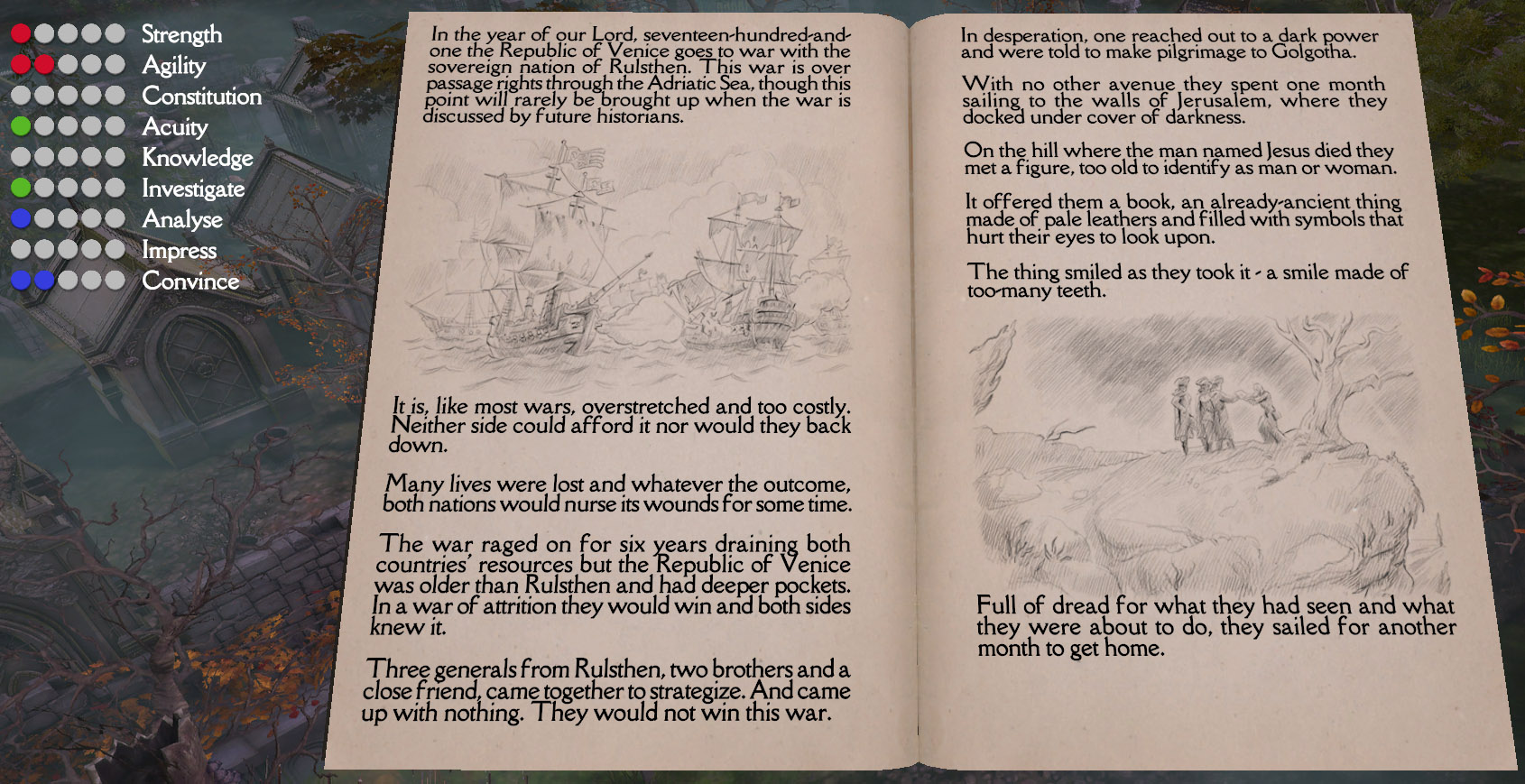
We have also almost completed a first draft of two chapters of the main game itself, in which the player discovers and tries out the first spell from a mysterious book. We’re generally keeping it tight and not putting in pointless time-filler side-quests, with the aim being that players can actually expect to finish the game in a reasonable number of hours, and enjoy the art, narrative, investigation and tactical-combat joys that it has to offer (rather than getting bored and giving up while hunting for 10 wolf hides to help a local farmer).
As well as putting a lot of effort into level editing (putting a full medieval town together is quite some effort!) I’ve been busying myself with programming all of the core systems needed by an RPG.. inventory, combat, AI behaviours, save+load, crafting. Integrating the code with the structured narrative information exported by Articy was a bit of fun, which basically involved having a 4MB massively-nested JSON file land on my hard drive and figuring out what it meant. I have also put together a cutscene-editing system similar to what I did in Goblins & Grottos.
The image below shows some of the data for a cutscene in which the player meets up for beers with their childhood friend Diedrik. This system gives me low-level control of character movements and animations, as well as control of the camera and other objects in the world (e.g. here beer tankards are appearing more and more on the table as the evening progresses). These cutscenes are also synchronised with the narrative ‘flow’ coming from the Articy data – so, for example, the cutscene can pause until a certain point has been reached in the Articy narrative, and similarly the narrative can be paused until activities in the 3D game which are under control of the cutscene system have reached a required point.
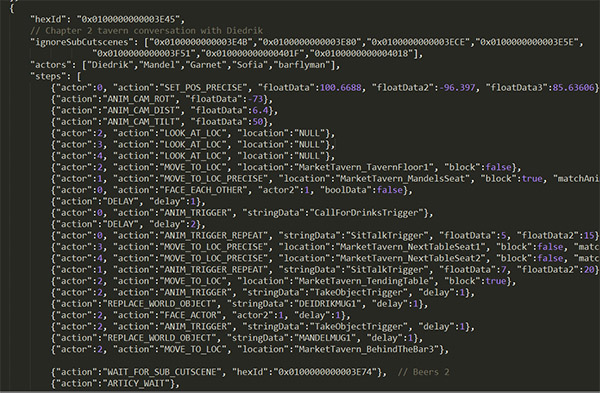
Combat will be turn-based, with movement working on a hex-grid:
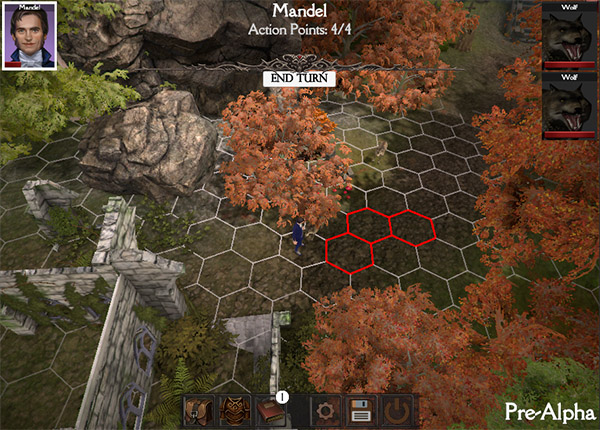
We also have some really good artists working part-time with us, working on character portraits, sketches for the prologue, and in-world character art and animations.
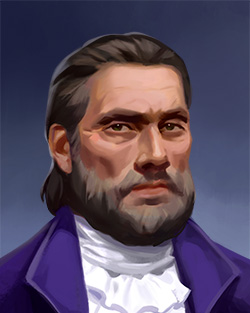
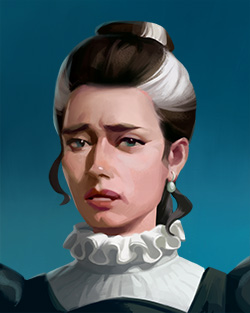
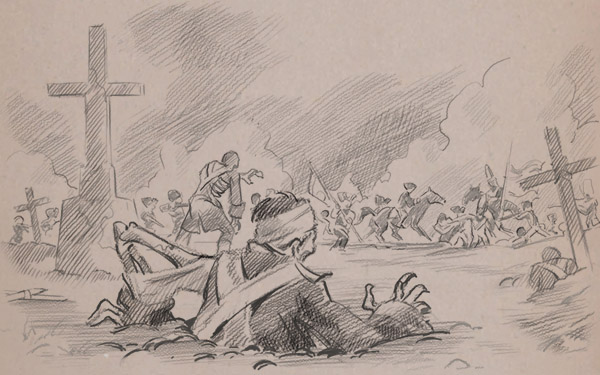
There’s more details here:
http://www.psychicsoftware.com/thenecromancer/
Darkwind: Camp Wars
Over the last few months, I have been working on a whole new meta-game layer for Darkwind. An upturn in player numbers in Darkwind which started last year and continued to build into 2020, together with some careful prodding by my son Harry, convinced me to do this.
The new Camp Wars system operates on a hexgrid map, whereby competing player-run camps take control and fight over each hex. The hexes themselves offer valuable resources to the camps (water, food, scrap metal, etc.) and we’re also planning to add a bunch of themed ‘specials’ which will only appear in one place – e.g. controlling a hex with a mutant village in it will boost a camp’s chances of attracting mutant recruits.
The design behind this was instigated by Harry (who has played a lot of strategy and wargames over the years). He even put together an initial design proposal, and has helped in running meetings with the players and teasing out balancing issues.
Here’s the interactive map running (you can drag it around with the mouse, and use the wheel to zoom in and out).
We’ve started to see some big PvP battles happening, which is exciting (PvP is something which players have always avoided, to a large extent, perhaps because the game has perma-death). It hasn’t all been plain sailing, of course – raise the stakes in a multiplayer game and there are bound to be fireworks. The players are a mature bunch though, so we’re ironing things out well (fingers crossed). We’ve put a bunch of risk mitigation systems in, as well as ratcheting up the possible profits to the right level that it’s hard to ignore them.
Camp Wars runs on a two-week cycle. In the first week, camps secretly deploy their forces to hexes under their control (for defence) or bordering on hexes they control (for attack). At the start of the second week, battles for contested hexes are scheduled, to be played within that week.
The best reason to fight is for resources. This system aims to add the motivation for PvP that Darkwind has lacked in the past.
Another key thing which this system aims to introduce is a proper route for newer players to get involved in camps. At first, they can assist the logistics and supply, and can use their vehicles and characters to assist a camp in battle. Later, they can become full members of camps, and finally can own their own camp – probably under the protection of a larger camp at first. We have designed a maximum cap on how much hardware any individual player can bring to a battle: this is specifically to promote cooperation and to make newer players valuable.
The Necromancer – Commune with the Realm of the Dead
The Necromancer is a narrative-driven RPG that I’ve been working on part-time since late 2018. The story focuses on the disturbing experience of getting drawn into necromancy (initially to investigate your father’s suspicious demise).
The video above shows some early footage of the town, graveyard and the interiors of some of the buildings, including the player’s own mansion. The white boxes you see are part of the debugging I was doing while implementing pathfinding, and I decided to leave them in here. For now, we’re keeping the camera angle high, in order to avoid the camera being blocked by world geometry too much as it follows the player character. A common solution to the camera being blocked is to bring it closer, but this wouldn’t work well given the low-poly nature of our 3D models and low-res nature of the textures- so I’ve done it the other way; the camera pushes away from the player character, and when blocked the player is highlighed in red. This is the first ‘full’ RPG I’ve written so making the various code systems has been fun – the inventory, narrative, save/load system, crafting, etc. have all taken some careful design thinking. As you can probably see, the level design has been keeping me busy too!
The game will focus strongly on the social side of interactions with the other characters in the game, as you seek to decipher the arcane pages of a previous necromancer’s spellbook, and then to master its spells and rituals yourself. All of this you will need to do without getting caught and lynched by the townsfolk. Although there will be battles between your undead forces and those of the town, the game focuses even more on the process and mechanisms of magic and ritual – we want the obtaining and using of your powers to feel like they are central parts of the story, and to take some effort, rather than simply being like firearms that you have collected and then fire at will (which is how many games treat magic).
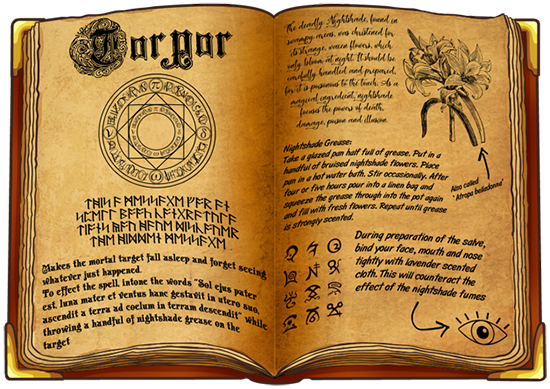
I had been knocking around with the basic idea of the player as a necromancer in a medieval town for a while – I think perhaps with a similar motivation to that behind my 2015/2016 game Goblins & Grottos – i.e. to focus on the player experience as an outsider, a character that is normally the enemy and normally a non-player character. However, I realised its potential as a narrative game when considering a funding application to the EU Creative Media fund. I wrote the draft story and ideas with my wife in 2018, and we were successfully funded in 2019.
Since then, we have been able to get assistance with some aspects of the artwork, and have taken on a *real* writer – Dave McCabe – whose previous games include The Darkside Detective. As Dave has nicely put it: “Unlike most RPGs, this game isn’t a hero’s journey as they rail against an evil lord. It is a person’s descent into madness as they plumb the depths of black magic in their search for revenge, the terrible things it asks of them and the uncomfortable choices they make in their search for power.”


